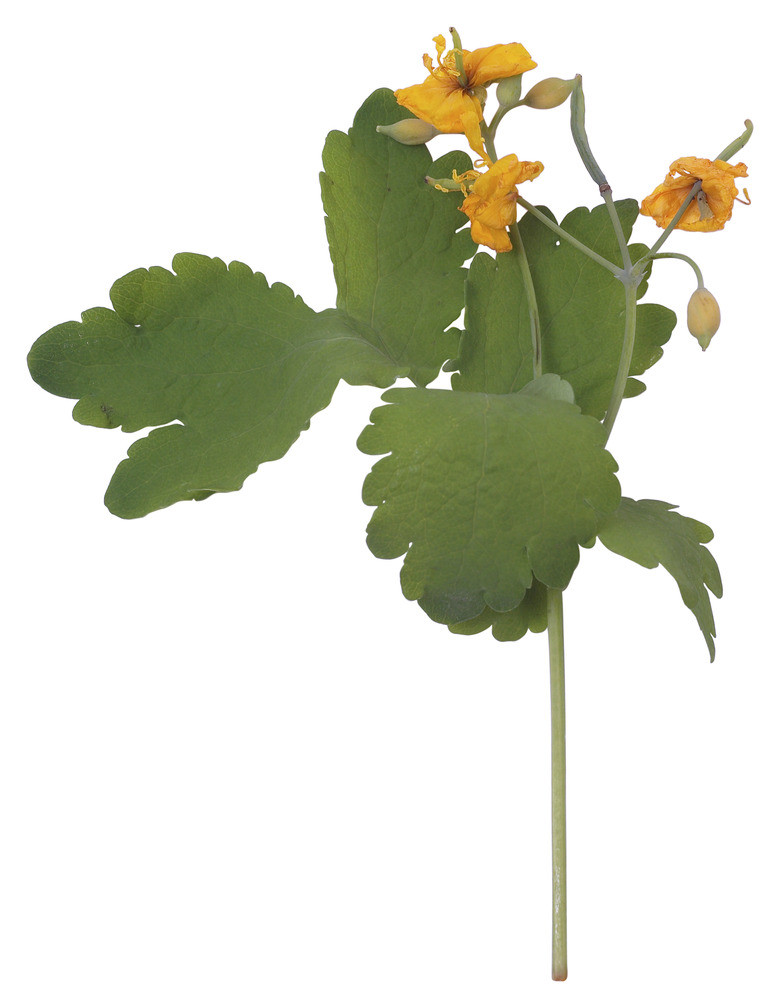Flower Plants With Seeds That Pop Open
While some flowers have seeds without any armor at all and depend on insects or other plants for pollination, some have seeds that either have a very hard skin or are enclosed in a pod or shell. The majority of these types of seeds will pop open at some point during the plant's life cycle, and some are even catapulted in several directions at the slightest touch.
Step 1
Bluebonnets (Lupinus texensis) take a few seasons to establish, but when they do, they reseed and will bloom reliably each spring. Seeds are usually planted in October and November so they can grow through the winter. Buebonnets bloom from mid-March to mid-May. During this time they form a seedpod. This pod starts out green and soft and then yellows. In its last stage of maturity, it turns brown. The pod will look dry and a bit shriveled around this time. You can hear the seeds rattle if you shake the pod, and usually the seedpods will pop open when you touch them, revealing tiny, hard seeds. The bluebonnet grows in the Texas Hill Country's alkaline soil. Bluebonnets may have low germination the first two years because of the hard-coated seeds. Growers often scarify (nick) the seeds a bit to "weather" the seed and encourage germination. They scratch them with a knife, sand them or freeze and soak the seeds in boiling water.
Step 2
- Bluebonnets (Lupinus texensis) take a few seasons to establish, but when they do, they reseed and will bloom reliably each spring.
- You can hear the seeds rattle if you shake the pod, and usually the seedpods will pop open when you touch them, revealing tiny, hard seeds.
Jewelweed
Step 1
Jewelweed (Impatiens capensis) has coarse, jagged leaves and flowers that grow in eye-catching clusters. Leaves are oval and a blue-green hue on top, whitish on the underside. The plant's name comes from the sparkle it has when covered in dew or rain. The trumpet-shaped flowers measure about an inch long. They are orange-yellow with reddish brown spots on the inside of the blossom. The plant has another flower that stays closed and doesn't have petals; this flower produces most of the plant's seeds. When the "fruit" is ripe, the seeds burst out in every direction at the gentlest touch. They typically land several feet away. Because of this, it's often called a touch-me-not. Jewelweed grows throughout the U.S. except for Wyoming, Montana, California and the southwest. This plant attracts butterflies and hummingbirds, and its juices are used holistically to soothe itching and irritation caused by insects and plants.
Step 2
Step 3
- Jewelweed (Impatiens capensis) has coarse, jagged leaves and flowers that grow in eye-catching clusters.
- This plant attracts butterflies and hummingbirds, and its juices are used holistically to soothe itching and irritation caused by insects and plants.
Siberian Peashrub
Step 1
The Siberian peashrub (Caragana arborescens) is also known as a pea-tree. It grows on the Northern Great Plains and is a hardy deciduous tree. The Siberian peashrub is native to Siberia and Manchuria, and adapts to sandy, alkaline soils. It is planted as a windbreak on farmlands and for hedges and outdoor screening.Yellow flowers blossom from April to June. The fruit is a pod that contains six reddish-brown oblong seeds. Pods change color from amber to brown when they ripen in the summer. Shrubs take about three to five years to reach full bearing potential. When harvesting the fruit, it's important to gather them quickly, over a two-week period, as soon as they're ripe. The pods pods open when they are dry, and the peas will disperse all over the ground.
Step 2
- The Siberian peashrub (Caragana arborescens) is also known as a pea-tree.
- The pods pods open when they are dry, and the peas will disperse all over the ground.
